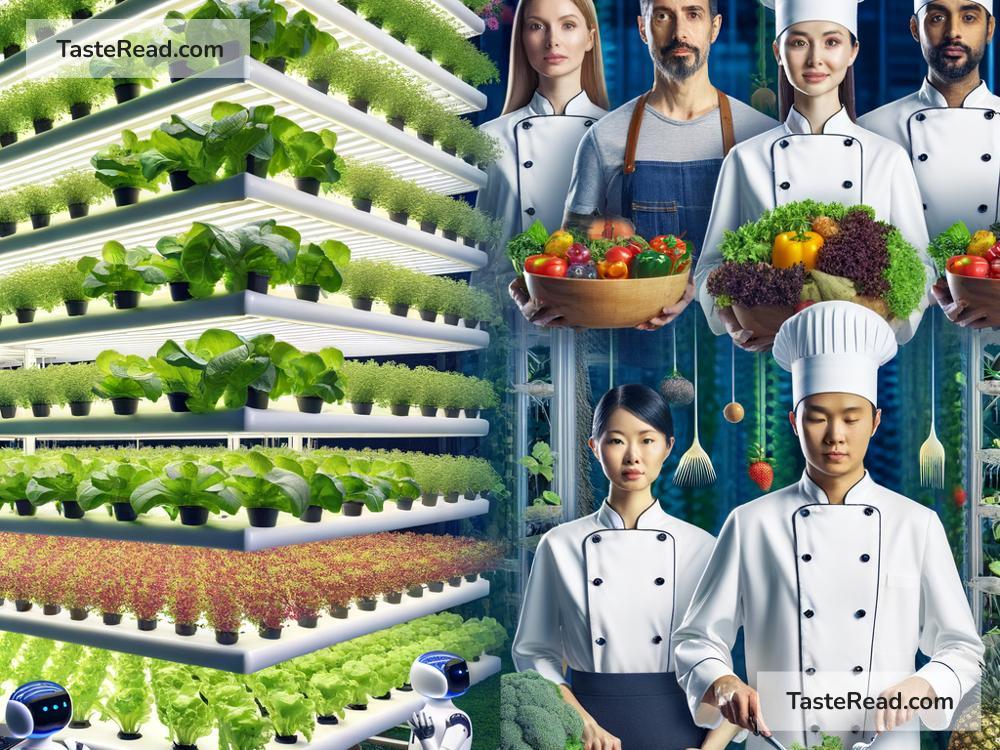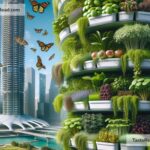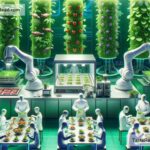The Future of Food and Regenerative Global Collaboration
Food plays a central role in our lives. It sustains us, connects us to culture and tradition, and shapes the health of our planet. But as the world changes, so does the way we grow, produce, and share food. Climate change, soil degradation, growing populations, and unequal access to resources are big challenges that humanity must face. These issues demand creative solutions and collaboration across nations, industries, and communities. The future of food lies in working together to build systems that respect the Earth and benefit everyone — a vision often called regenerative global collaboration.
What Does the Future of Food Look Like?
The future of food isn’t just about producing more food; it’s about producing better food. Better means nutritious, accessible, and grown in ways that help heal the planet rather than harm it. Many exciting innovations and practices are shaping this future, such as:
1. Regenerative Agriculture
Regenerative agriculture focuses on farming methods that restore soil health, increase biodiversity, and capture carbon from the atmosphere. Unlike traditional practices that often deplete the land, this approach works with nature to create lasting systems. For example, farmers may plant cover crops, rotate their crops, and minimize tilling to maintain healthy soil. These practices help store carbon, retain water, and make land more resilient to climate change.
2. Vertical and Indoor Farming
With limited space on the planet, especially in urban areas, vertical farming offers new ways to grow food inside tall buildings or warehouses. Plants are grown on stacked shelves using technologies like hydroponics (water-based systems without soil) and LED lighting. This reduces water usage, eliminates the need for pesticides, and allows food to be grown closer to cities and people.
3. Alternative Proteins
As demand for meat and dairy grows, concerns about resource use and greenhouse gas emissions also rise. Alternative proteins, such as plant-based meats, lab-grown meat, and insect protein, provide more sustainable options for consumers. These foods use fewer resources and create fewer emissions, while offering high-protein content.
4. Food Security Through Technology
Digital tools like artificial intelligence (AI), blockchain, and precision farming are empowering communities to better manage food systems. By predicting weather patterns, tracking crop growth, and minimizing waste, these technologies ensure a consistent supply of food for everyone, even in challenging conditions.
Why Regenerative Systems Matter
Regenerative systems are about healing and sustainability, not just growth. For too long, food production has focused on short-term yields at the expense of long-term health — for people, land, water, and ecosystems. This approach has led to exhausted soils, polluted waters, and declining nutrients in food. Regenerative practices flip the script. Whether it’s farming, fishing, or forestry, they aim to make ecosystems stronger over time.
For example, traditional monoculture farming (growing a single crop repeatedly) often results in soil erosion and nutrient loss. In regenerative farming, farmers plant multiple crops and integrate animals, creating balanced, natural ecosystems that thrive without harmful chemicals. Healthy soil supports better crops, which produce better food for people.
Global Collaboration: A Key to Success
No single country or organization can solve these food challenges alone. That’s where regenerative global collaboration comes in. With the planet so interconnected, every region and community plays a role in shaping the future of food. Countries must share knowledge, resources, and technology to address food production, distribution, and equity.
1. Sharing Knowledge
By bringing together scientists, farmers, tech experts, and leaders, countries can make smarter agricultural decisions. For example, drought-resistant crops developed in one country can be shared with another facing water shortages. Indigenous knowledge of local ecosystems can offer innovative solutions to protect biodiversity globally.
2. Fair Trade and Equal Partnerships
To truly transform food systems, businesses and governments need to create fair and ethical trade structures. Small farmers in developing countries must be given access to markets, resources, and education to compete on a global scale. Collaboration should lift everyone, not just a few.
3. Community-Centered Collaboration
The future of food also depends on empowering local communities. Greater involvement from farmers, consumers, and grassroots organizations ensures solutions are tailored to unique environments. For instance, community-supported agriculture (CSA) programs connect farmers directly with consumers, reducing waste and building trust.
4. Global Food Policies
International treaties and policies will be critical for aligning nations around sustainable and regenerative practices. Agreements to reduce food waste, protect farmland, and regulate harmful chemical use are already creating progress. These efforts must expand globally.
How Can We All Play a Part?
Improving food systems isn’t just about farmers and governments — everyone can help create a more regenerative future. Here are a few ways you can contribute:
- Eat Sustainable Choices: Look for food grown responsibly and locally whenever possible. Plant-based meals and alternative proteins are great for both your health and the environment.
- Reduce Food Waste: Be mindful of how much food you buy and what gets thrown away. Wasted food often ends up in landfills, generating methane gas — one of the worst greenhouse gases.
- Support Ethical Brands: Research companies that practice fair trade, sustainability, and regenerative principles. Supporting these brands helps push the industry forward.
- Grow Your Own Food: Even a small garden can reconnect you to nature, reduce your carbon footprint, and teach you about sustainable agriculture.
A Shared Vision for the Future
The future of food isn’t just about filling plates — it’s about creating systems that nourish people and the planet alike. Regenerative global collaboration offers hope for addressing today’s challenges with creativity, compassion, and shared responsibility. A future where food is grown sustainably, distributed fairly, and celebrated universally is within reach. By working together, we can feed the world while fostering a healthier Earth for generations to come.
Let’s start regenerating today — for ourselves, for our planet, and for the future we all share.


